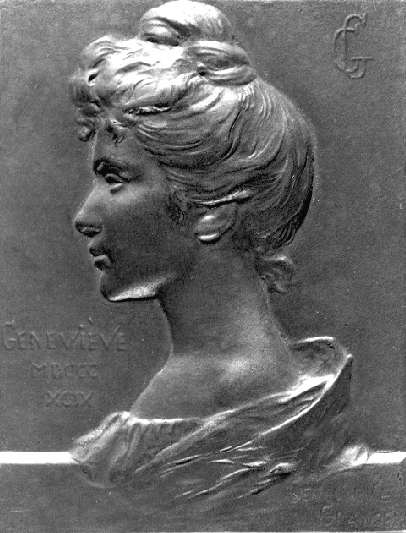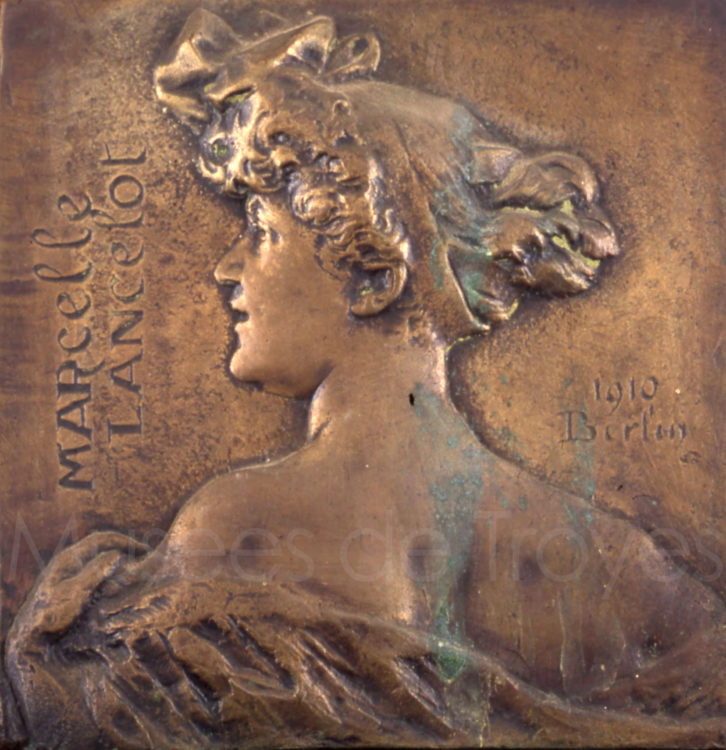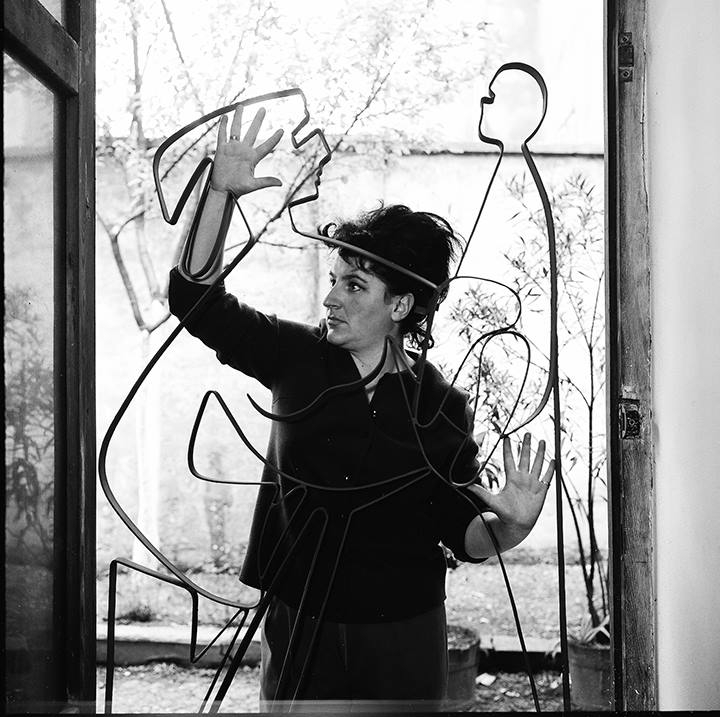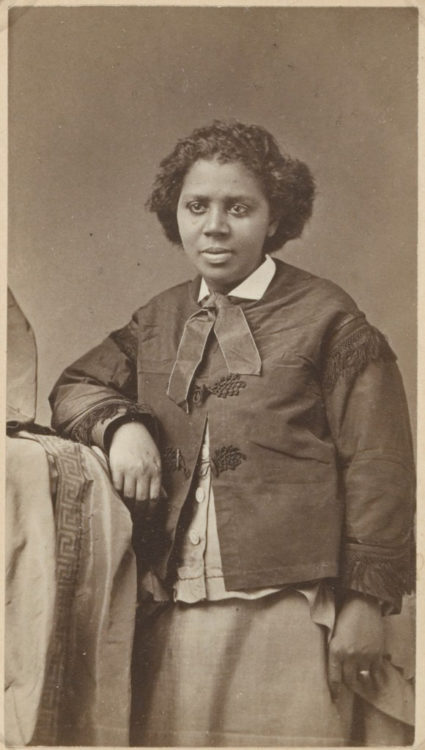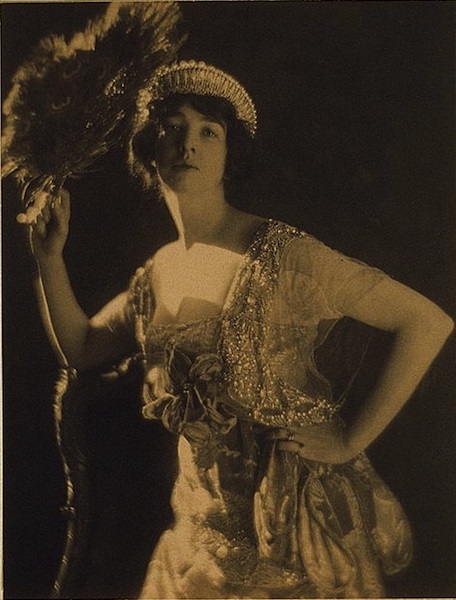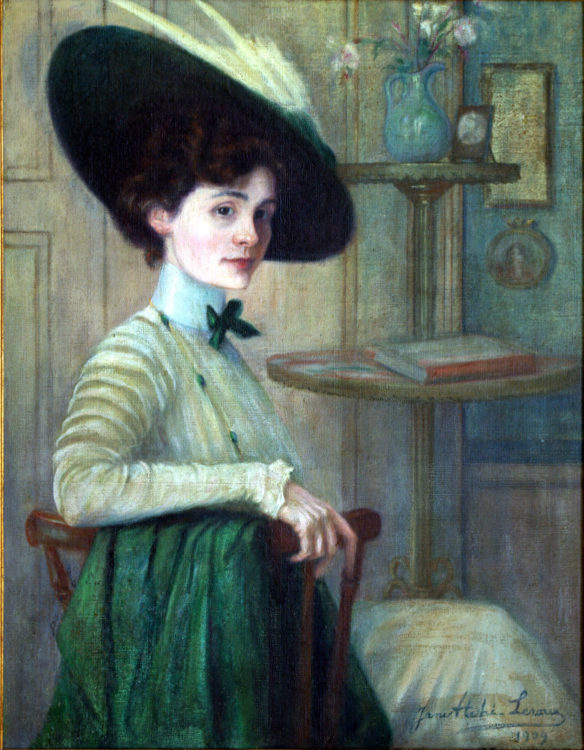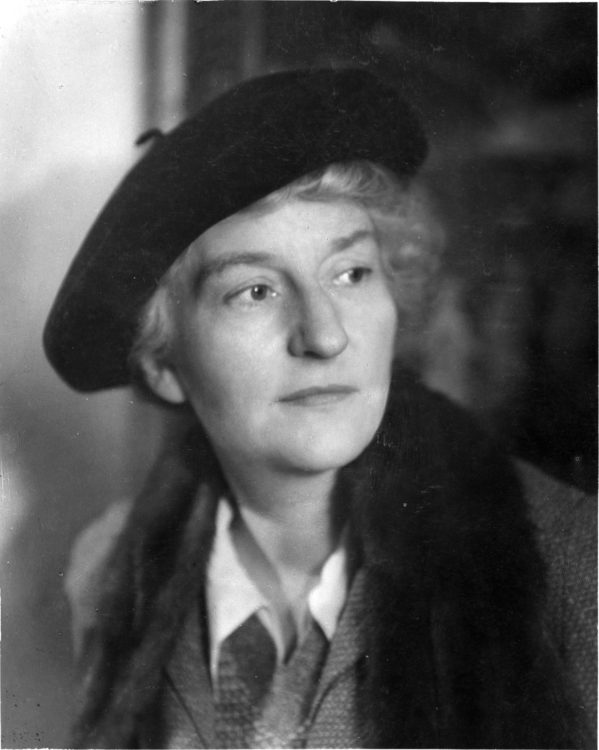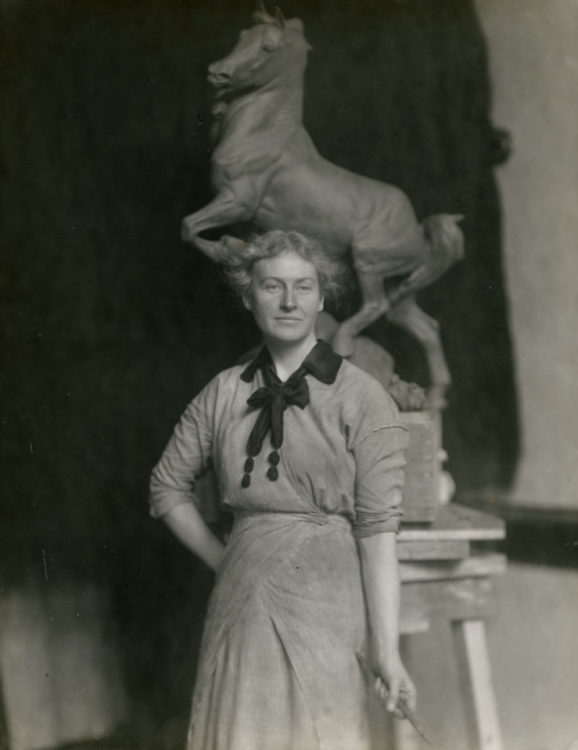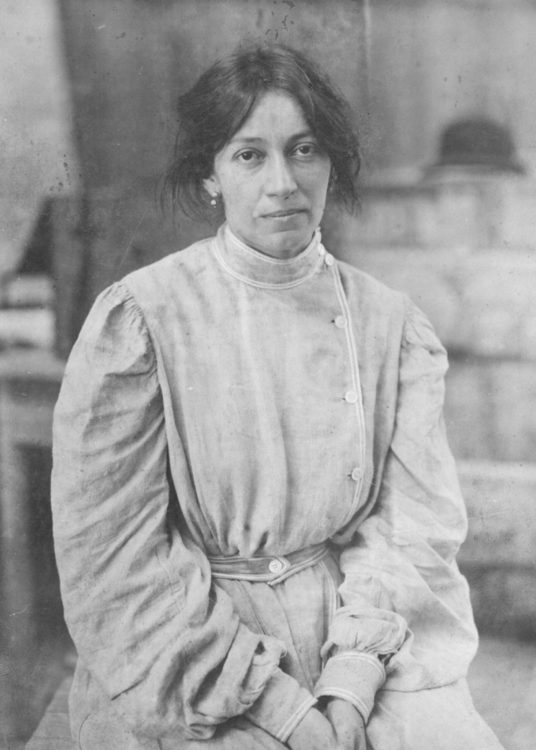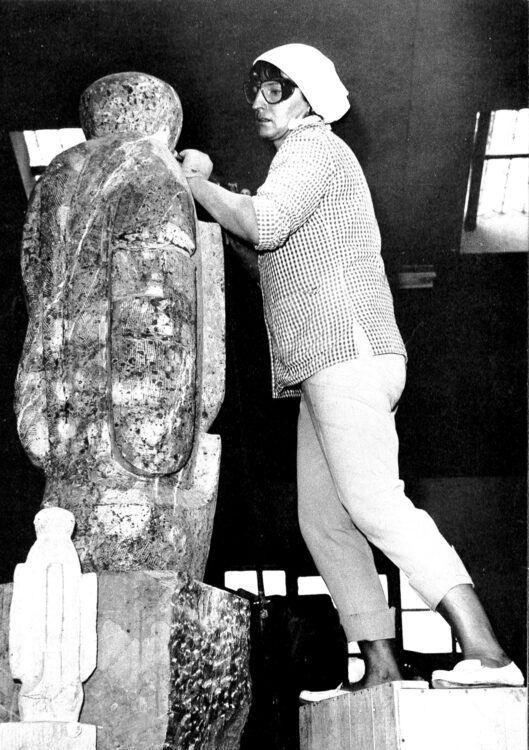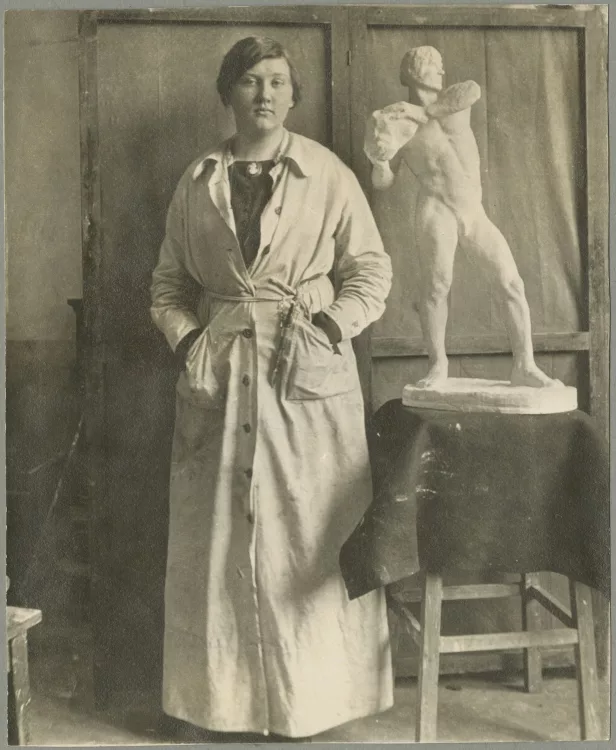Research
Claire Colinet, Danse de Carthage, ca. 1920, cold-painted gilt bronze on a marble base, location unknown, © Photo: Christie’s
While the Art Deco-type statuettes that Claire Jeanne Roberte Colinet (1885-1972) sculpted during the interwar period, such as her Danse de Carthage [Dance of Carthage, ca. 1920], are still widely present on the art market, very little is known about her. Up till now, there has been no in-depth research on her life and work.
The first part of this dissertation retraces the major stages of C. Colinet’s artistic and personal life: from her birth in Brussels in 1885 to her brief foray into writing, from her sculpture training with her father and later Jef Lambeaux (1852-1908) to the first time her work was exhibited – at the 1912 Salon de Printemps – and from her considerable presence on the Parisian art scene between 1913 and 1940 to her death in Asnières-sur-Seine in 1972. Not only does this research adopt a chronological and factual approach, but it also focuses more specifically on the various strategies that C. Colinet, as a woman artist, implemented to establish her artistic career.

Claire Colinet, Allégorie de la Musique, ca. 1935, stone, Asnières-sur-Seine, façade of Centre administratif et social communal, © Photo: Archives municipales d’Asnières-sur-Seine

Vintage postcard presenting on the front a photograph of Claire Colinet sculpting in her studio in Brussels, signed: “Cl. Godchaux Colinet”, dated 19 November 1910 and located in Brussels. On the back, Claire Colinet and her first husband Georges Godchaux present their wishes for the year 1911 to relatives. Reproduced in Shayo Alberto, Statuettes of the Art Deco Period, Woodbridge, ACC Art Books, 2016, p. 69
As a woman, C. Colinet had to legitimize her entry into a predominantly male-dominated field. This she achieved through several means. In addition to training at the private workshop of a reputed master, she abundantly participated in more traditionalist-leaning salons, such as those organised by the Union des femmes peintres et sculpteurs, the École française, the municipality of Asnières-sur-Seine, and the Salon des artistes français – the embodiment of official art at the time, from which she received an honourable mention in 1914. She was also appointed Academy officer in 1912 and Public instruction officer in 1924. These various institutional commendations enabled her on the one hand to have some of her sculptures made into ornamental bronzes by several art publishers – including Gustave Leblanc-Barbedienne, Arthur Goldscheider, Edmond Etling, and Les Neveux de J. Lehmann – earning her a decent living and increasing the diffusion of her work; and on the other hand, they allowed her to receive several public commissions in the 1930s, including her 1935 Allégorie de la Musique [Allegory of Music] for the pediment of the administrative and social centre in Asnières-sur-Seine. On the subject of the professionalisation of her status as a woman artist, also of note is her choice of signature, “C(l).J.R.Colinet”, free from any marital figure but featuring the initials of all three of her names, thus highlighting a “more explicitly personal auctoriality [sic]”1, as well as the construction of her social image as an artist via the diffusion of a photograph – which the artist and her first husband, Georges Godchaux, used as a greeting card for the year 1910 – that shows the woman sculptor in the act of creation, standing in her studio in work clothes with tools in hand.
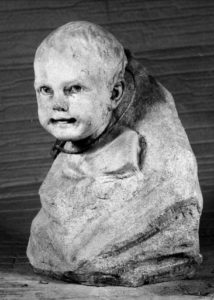
Claire Colinet, Radieuse aurore ou Tête d’enfant, 1928, silithe, Ivry, Conservation des Œuvres d’Art Religieuses et Civiles de la Ville de Paris
Reproduced in Sterckx Marjan, “Parcours de sculptrices entre Belgique et France. Présence et accueil”, in Cahiers de l’IRHIS, no. 2, 2007, p.23
The second part of this research project focuses on rediscovering the many lesser-known works by C. Colinet – such as Radieuse aurore [Radiant Aurora, 1928] – and putting together a wider overview of her artistic production. The thematic and stylistic analysis of this production encompasses the artist within her times – within Art Deco, symbolist, and portraitist movements – while also bringing out the specificities of her sculptural work, particularly her realistic rendition of the female body as evidence of her female perspective in regards to the bodies of her models.
Master’s research dissertation, directed by Sébastien Clerbois and defended by Margot Eben on 5 August 2018, Université libre de Bruxelles (Belgium).
Foucher Zarmanian Charlotte, Créatrices en 1900. Femmes artistes en France dans les milieux symbolistes, Paris, Mare & Martin, 2015, p. 147.
Margot Eben, "Being a woman sculptor in the first half of the 20th century: the case of Claire J. R. Colinet." In Archives of Women Artists, Research and Exhibitions magazine, . URL : https://awarewomenartists.com/en/magazine/etre-une-femme-sculpteur-dans-la-premiere-moitie-du-xxe-siecle-le-cas-de-claire-j-r-colinet/. Accessed 21 December 2025





